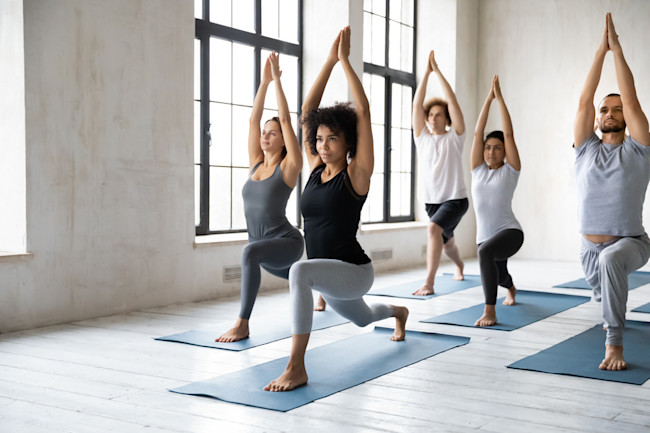Educators value the success of all students. Educators care for students and act in their best interests.
During EDU 391 Practicum Experience, Standard 1; ensuring I care for my students and acted in their best interest, was done three ways:
- Students were empowered through the process of self-assessment and receiving “real-time” formative feedback.
- Students were able to advocate for their own learning by providing formative feedback and suggestions to the teacher in real-time.
- Students were provided a safe learning environment to feel comfortable trying new things, leading warm-ups/cool-downs and advocating for their physical and mental well-being.
I took it upon myself to handle the assessment portion for my time with both my Gr. 10 P.H.E. classes in the 391 practicum. Following the Correlieu Active Living Physical Education Learning Outcomes sheet, I was able to make learning intentions very clear to students, aid them in their self-assessments every day, deliver formative feedback before, during and after class. Watching self-assessment in action was enlightening because students were able to debrief after class and walk through how their time really went and the reflection process was stunning as some students at the beginning who I thought absolutely conquered class would assess themselves low, and some others who lacked participation would assess themselves higher. This was the first step in building our relationship, because students began to realize that I was invested in their learning with the formative feedback. By the end of the 3 weeks, those students who were struggling with self-esteem were “sassy” in self-assessing, showing a new sense of confidence and empowerment! Those students that were unrealistically assessing themselves high were beginning to hold themselves accountable for their actions in class and really break down their process. Self-Assessment not only held the students accountable for their active participation in class, but incorporated First People’s Principles of Learning (FPPL) where “Learning is Holistic and Reflexive,” and “Actions Have Consequences.”

The Self- Assessment process gave students the opportunity to learn how to reflect on their learning, analyze strengths and weaknesses, and see a direct consequence based on their choices to engage or not that day- which is a pretty awesome life skill to have. By the end of the 3 week practicum, and with some help along the way, students were able to give a self-assessment that sounded like, “I deserve a 17/20 today because I tried during the drills, games and cool down, but I really lacked in the warmup, did not help with equipment set up and forgot my gym strip.” Not only are students accountable and reflecting on their learning, but they also know that the mark they give is part of their overall outcome based on our daily conferences. The summative mark that will be shown on their report, will be an accumulation of negotiations and conferences that we had together. What could be more empowering than knowing you had say in your own outcome?

Where students felt listened to, was my every day, “real-time” formative feedback and search for formative feedback. Feedback was done during walk-arounds while students tinkered with new skills in various skill building exercises. I was able to provide helpful hints and adjustments to aid in student success, whether that meant to obtain the skill we are working on, or adapt it for various learners. Where students were able to provide formative feedback was when I constantly asked what they enjoyed, what they didn’t enjoy, and where they saw value in their learning. If students were displeased with the learning approach, they were to come up with a suggestion of how to fix or adjust the activity to make it work better and obtain the same learning outcome. The part of this process that helped our dynamic, was that I always implemented their suggestions right away, or the next day depending on the time we had. Their feedback after the practicum was that they enjoyed that they were able to give input such as modifications to games or drills, ask for a certain amount of game time, and overall change something if it wasn’t working so in the learning process, they were able to have “fun.”

By providing students with a safe learning environment where they feel comfortable trying new things and expressing vulnerability when learning new skills, was definitely the best way to create a place of trust. With the incredibly respectful class I had the opportunity to teach, it really allowed for everyone (including myself) to feel like they could make mistakes and it was not only okay- but celebrated! We learned to own our mistakes so that embarrassment almost became non-existent, and if we found ourselves embarrassed, there was always encouragement or lightening jokes to follow to help ease through the tension.
Because of the environment we had and maintained, students were able to feel comfortable trying new activities such as ZUMBA, HIIT circuits (High Intensity Interval Training) and Pilates. Students were also beginning to advocate for their own body, and were given full reins by the last week to run our warm-ups and cool-downs based on their collective muscular needs. Some mornings students recommended to take it slower with the warm-ups, easing into the day starting with static stretches or Yoga and progressing to dynamic stretches. Other days, particularly afternoons, students were tired of sitting in their classroom and had an abundance of energy, this is where they advocated for things like Dynamic stretches, Boxing Circuits, Pilates, HIIT circuits or Abdominal circuits where they knew from our previous experience, would help amp them up and prepare for the drills and game play ahead.

As a teacher, giving students the opportunity to advocate for their own learning, providing formative feedback in real-time and creating/maintaining a safe learning environment opened up doors for all students to feel listened to, heard and empowered in their P.E. experience. Providing a space where they could take risks, build new skills, find new interests with healthy living and flourish in the environment while supporting one another in attempts to grow, enabled the students to not only be a class, but a team.

